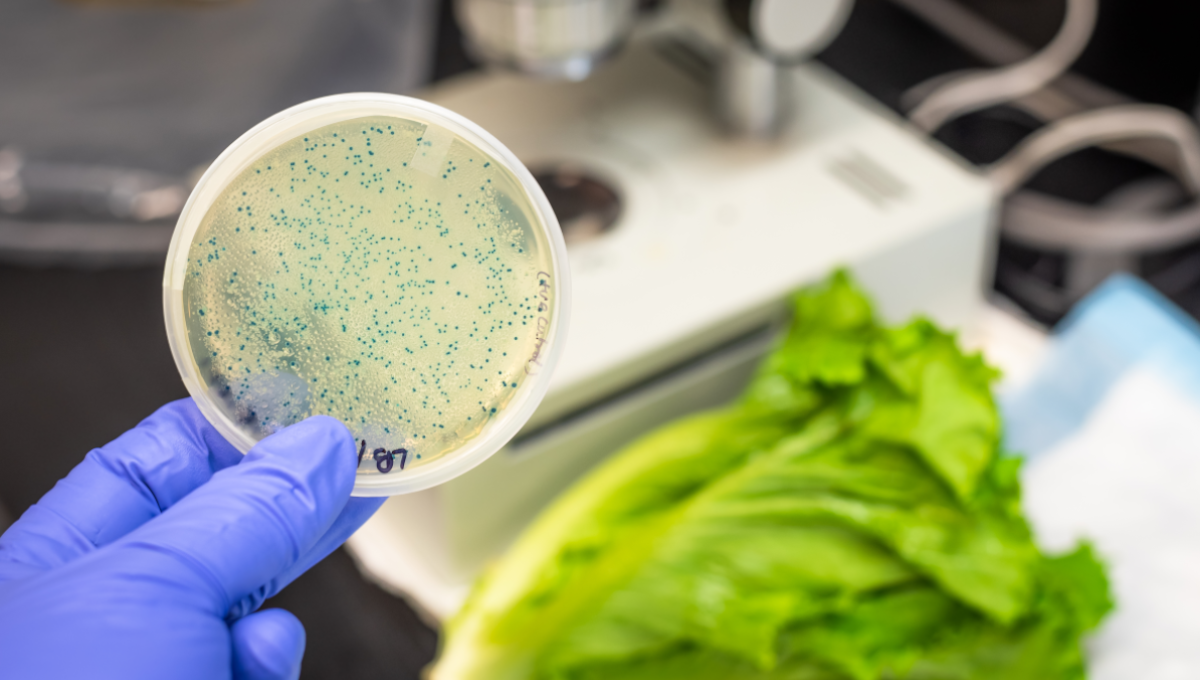Teresa Bergholz and Jade Mitchell, both Ph.D.’s with Michigan State University (MSU), hope to characterize the changes that E. coli O157:H7 goes through on romaine lettuce during post-harvest cold storage.
Their project is titled “Quantifying risk associated with changes in EHEC physiology during post-harvest pre-processing stages of leafy green production.”
Their goal is to develop an easily accessible online tool that industry can use to identify practices that reduce the risks of E. coli O157:H7 transmission via romaine lettuce.
“Maybe there’s something you can do to modify the way you’re harvesting and cooling that lets you reduce risk,” Bergholz said. “Can we shift the harvest time and how quickly we get it to the cooling center?”
The Center for Produce Safety has awarded more than $300,000 to fund this research project.
Compared to the growing season and processing, the time romaine spends in coolers and refrigerated transport after harvest isn’t very long. However, Bergholz thinks it’s a great place where the project can contribute information about what happens during that short period of time.
So far the team has reviewed published literature on the subject and identified data gaps which have informed their risk model. The researchers are also conducting laboratory experiments that simulate cooling and transportation of romaine.
Bergholz sought industry input to accurately reflect real-world scenarios.
“We’ve benefited so much from our industry partners who shared their anonymized harvest temperature data,” she said. “We could never have collected the 5,000 data points that they shared with us. They’ve been collecting this data for years.”
“This data is invaluable because we need to have conditions in the lab that make sense,” Bergholz said. “When we have a better sense of the conditions that are actually happening in the field, it helps us tremendously.”
After inoculating multiple lettuce plants with E. coli O157:H7, the researchers put them in a growth chamber for a day. They then cut the romaine and place the pieces in a cooler to simulate harvest and cold storage.
Each day over a five-day period, the researchers pull samples and assay them for the pathogen. Of particular interest was the pathogen’s state of dormancy.
When under stress, E. coli O157:H7 can transition to a dormant state labeled as either persister or viable non-culturable (VBNC) state. In the dormant state, cells do not reproduce, but may still cause disease.
When the stressor is removed, the metabolism of cells in the persister state can return to normal. The cells in the VBNC state cannot be cultured on an agar medium, preventing commonly used detection methods.
As part of the project, the researchers plan to examine whether cold storage impacts persister and VBNC transition.
“There’s still so much that we don’t understand about the persister state and how that might be part of the continuum into VBNC,” she said. “We don’t know if being in the persister state impacts detection. We plan to purposely force cells into the persister state and determine whether we can detect them with industry detection methods.”
The research results will be used to help fill in the gaps of the risk-assessment model, which will focus on practices to reduce E. coli O157:H7 risk during the window between romaine harvest and pre-processing.
More about this research can be found here.
About CPS: The Center for Produce Safety (CPS) is a 501(c)(3), U.S. tax-exempt, charitable organization focused exclusively on providing the produce industry and government with open access to the actionable information needed to continually enhance the safety of fresh produce.
(To sign up for a free subscription to Food Safety News, click here.)

